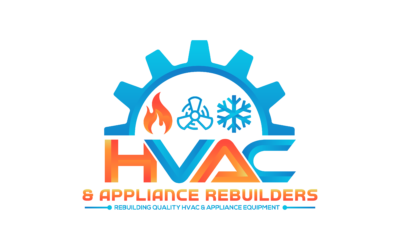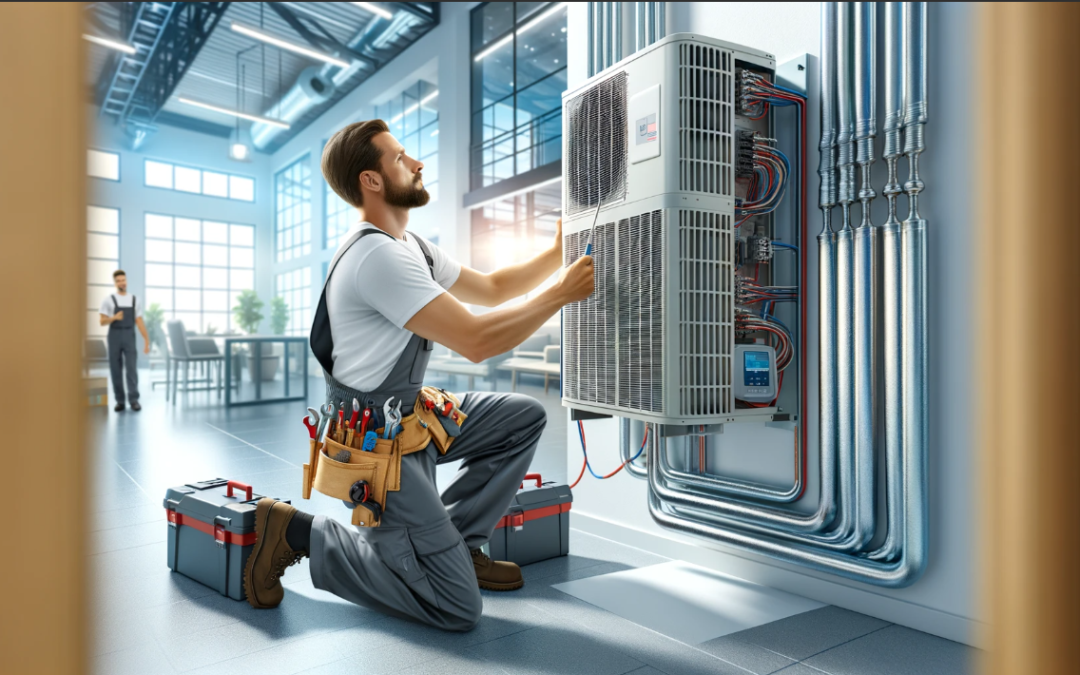Introduction
For business owners, maintaining a comfortable and energy-efficient environment is crucial for both employees and customers. Installing a heat pump can provide a cost-effective and reliable solution for your commercial property’s heating and cooling needs. This guide will cover the benefits, considerations, and detailed process of heat pump installation tailored specifically for business owners.
Understanding Heat Pumps
What is a Heat Pump?
A heat pump is an HVAC system that transfers heat between the indoors and outdoors. In the winter, it extracts heat from the outside air and moves it inside your property. In the summer, it reverses the process, removing heat from inside your building and releasing it outside, functioning like an air conditioner.
Benefits of Heat Pump Installation for Business Owners
Energy Efficiency
- Heat pumps are highly efficient, reducing energy consumption and lowering utility bills, which can significantly impact your bottom line.
Consistent Comfort
- Heat pumps provide consistent indoor temperatures, ensuring a comfortable environment for both employees and customers year-round.
Environmental Responsibility
- By using renewable heat sources, heat pumps reduce your business’s carbon footprint, contributing to sustainability goals.
Versatility and Reliability
- Heat pumps offer both heating and cooling capabilities, making them a versatile solution for all seasons and ensuring long-term reliability.
Pre-Installation Considerations
Property Assessment
- Evaluate your commercial property’s heating and cooling needs, insulation levels, and existing HVAC infrastructure to determine the best type of heat pump.
Choosing the Right Heat Pump
- Select the appropriate heat pump type (air-source, ground-source, or water-source) based on your property’s requirements and local climate conditions.
Professional Consultation
- Engage a certified HVAC technician to assess your property and recommend the most suitable heat pump system. This ensures proper sizing and compatibility.
The Installation Process
Step-by-Step Installation
1. Site Preparation
- Clear and level the area where the outdoor unit will be installed. Ensure it has proper drainage and is protected from potential damage.
2. Indoor Unit Installation
- Install the indoor unit in a central location to maximize efficiency and airflow. This may involve mounting it on a wall or ceiling.
3. Connecting Refrigerant Lines
- Install the refrigerant lines that connect the indoor and outdoor units. These lines transfer the refrigerant that absorbs and releases heat.
4. Electrical Connections
- Ensure the system is properly connected to your property’s electrical system. This step should be performed by a licensed electrician to guarantee safety and compliance with local codes.
5. System Testing
- After installation, thoroughly test the system to ensure it is operating correctly. Check refrigerant levels, thermostat settings, and overall functionality.
Maintenance Tips for Business Owners
Regular Professional Maintenance
- Schedule bi-annual maintenance checks with a professional HVAC service provider to keep the heat pump running efficiently. This includes cleaning or replacing filters, checking refrigerant levels, and inspecting electrical components.
DIY Maintenance
- Ensure the outdoor unit is free from debris and obstructions. Regularly check and clean the indoor unit’s air filter to maintain proper airflow and efficiency.
Monitor System Performance
- Keep an eye on the system’s performance and report any issues promptly to your HVAC service provider to prevent minor problems from becoming major repairs.
Common Challenges and Solutions
Space Constraints
- Ensure there is sufficient space around the outdoor unit for proper airflow and maintenance access.
Weather Protection
- Protect the outdoor unit from extreme weather conditions with a suitable cover or shelter.
System Compatibility
- Verify that the new heat pump is compatible with existing ductwork and electrical systems to avoid installation issues.
Conclusion
Installing a heat pump in your commercial property can provide significant energy savings, enhance comfort, and support your sustainability goals. By following the steps outlined in this guide and ensuring professional installation and regular maintenance, you can maximize the benefits of your heat pump system. Trust HVAC REBUILDERS to deliver professional, reliable service and ensure your business’s comfort year-round.

